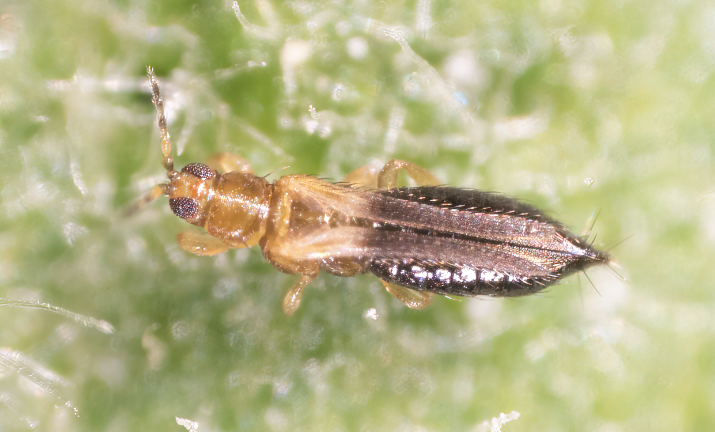By Maegan Beatty
The U.S. Department of Agriculture (USDA) Animal and Plant Health Inspection Service has categorized Thrips parvispinus as a quarantine-significant pest. Thrips are small insects belonging to the order Thysanoptera. They are typically about 1 to 4 millimeters long and can vary in color from yellow to brown or black. Thrips are located across the world and are pests in various crops, including fruits, ornamentals and vegetables.

T. parvispinus have distinctive wings that are long and narrow with fringe-like edges. The pest feeds by piercing the plant tissue and sucking the sap, which can cause damage to the plant and reduce its growth and yield.
Where Is It?
According to the University of Florida Institute of Food and Agricultural Sciences (UF/IFAS) Mid-Florida Research and Education Center, T. parvispinus have been found in Florida, Georgia, Colorado, North Carolina, South Carolina, Puerto Rico, Hawaii, Barbados and Ontario (Canada). The pest has been collected from various specialty crops and flowers. Interceptions have been made in Ohio and Pennsylvania.
Why Is It Important?
T. parvispinus is a polyphagous pest, which means it feeds on a wide variety of foods. Currently, it is reported to be feeding on at least 43 plant species from 19 families, including fiber crops, fruits, legumes, ornamental plants, tobacco and vegetables. Female T. parvispinus insert their eggs onto leaves, and the larvae feed on the leaves and flowers, causing damage.
According to ornamental grower Anthura, “These thrips are characterized by very entrenched behavior. They prefer to hide in the young, rolled-up leaves, where they cause the most damage. Thrips’ pupation mainly takes place in the soil.”
The thrips eggs can cause small, brown round spots on flowers. This is caused by the egg deposition. Thrips also leave a presence of silver scars in the plant foliage, specifically on fully developed leaves.
What Should You Do?
If you suspect a T. parvispinus infestation on your property, contact your local Extension office. You can utilize a scouting sheet to assist in identifying the size and appearance of T. parvispinus visually. Early detection for ornamental plants should be conducted by searching and dissecting flowers for thrips.
Growers can also send in a sample for identification and molecular analysis. Sampling protocols and kits can be provided for your property if needed.
For information about how to collect thrips samples and preserve them for evaluation and directions for scheduling shipments, contact Cindy McKenzie (772-462-5917 or Cindy.Mckenzie@usda.gov), USDA research entomologist.
For a field guide, scouting information and tentative field diagnostics, contact Muhammad Ahmed (352-283-0173 or Muhammad.Ahmed@usda.gov) USDA research entomologist.









